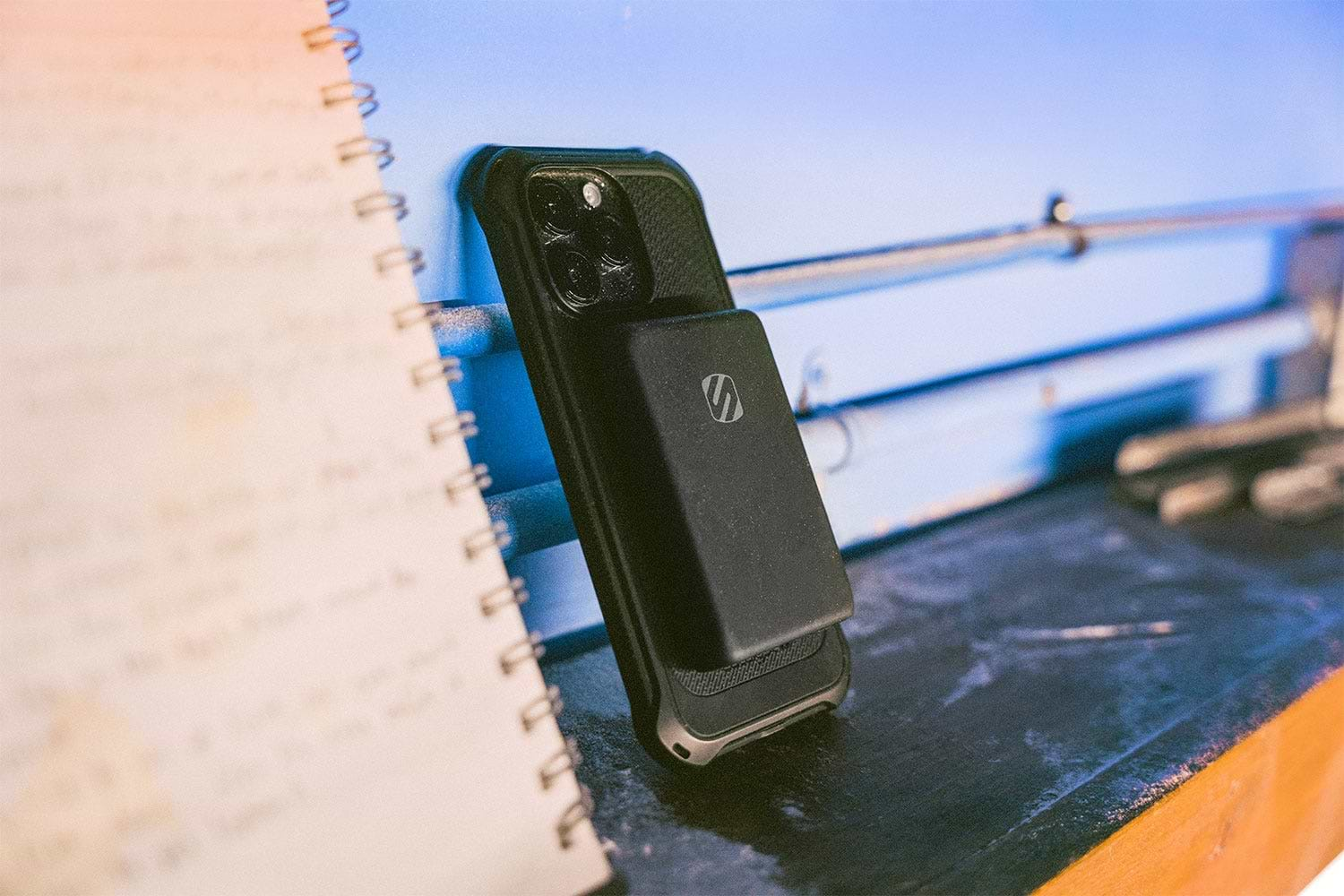Evaluating a 10,000mAh Power Bank's Efficiency

In today's digital age, where our lives revolve around smartphones, tablets, and other portable devices, having a reliable power source on hand is essential. Power banks have become increasingly popular as a portable solution for charging devices on the go. However, not all power banks are created equal. Efficiency plays a crucial role in determining the reliability and performance of a power bank.
In this article, we will delve into the intricacies of evaluating a 10,000mAh power bank's efficiency and provide valuable insights for making an informed decision.
Understanding Power Bank Capacity
The Meaning of 10,000mAh
Before we begin evaluating a power bank's efficiency, it is important to understand the concept of capacity. The capacity of a power bank is measured in milliampere-hours (mAh) and indicates how much charge the power bank can store. A power bank with a capacity of 10,000mAh can theoretically provide 10,000 milliampere-hours of charge to a device. However, it is vital to note that the actual usable capacity tends to be lower due to energy losses during charging and discharging processes.
When it comes to power banks, the capacity is a crucial factor to consider. It determines the amount of charge that can be stored and subsequently delivered to your devices. The higher the capacity, the more charge the power bank can hold, allowing for multiple device charges before needing to be recharged itself.
However, it is important to delve deeper into the concept of capacity to fully understand its implications. While a power bank may boast a capacity of 10,000mAh, it is essential to recognize that this theoretical value may not translate directly into the actual usable capacity.
Energy losses occur during the charging and discharging processes, resulting in a lower effective capacity than what is stated. These losses can be attributed to various factors such as heat dissipation, voltage conversions, and internal resistance.
How Power Bank Capacity Affects Device Charging
The capacity of a power bank directly impacts the number of device charges it can provide. Generally, a higher-capacity power bank can charge devices multiple times before needing a recharge itself. This is particularly beneficial when you are on the go or in situations where a power source is not readily available.
Imagine you are on a long-haul flight, and your smartphone is running low on battery. A power bank with a higher capacity, such as 10,000mAh, would be able to charge your device multiple times, ensuring that you stay connected and entertained throughout the journey. On the other hand, a power bank with a lower capacity may only provide a single charge, leaving you with limited power for the rest of the flight.
However, it is important to consider the energy efficiency of the power bank as well. While a higher-capacity power bank may offer more charges, it does not necessarily mean that it will utilize the available charge efficiently. Energy efficiency plays a crucial role in determining how effectively the power bank converts and delivers the stored charge to your devices.
Factors such as circuit design, voltage regulation, and power conversion efficiency can impact the energy efficiency of a power bank. A power bank with superior energy efficiency will ensure that a higher percentage of the stored charge is effectively utilized, resulting in more device charges and longer battery life for your devices.
Key Factors in Power Bank Efficiency
Output Voltage and Current
The output voltage and current of a power bank play a significant role in its efficiency. Most power banks have a standard output of 5V, which is suitable for charging most portable devices. However, the output current can vary, with a higher current allowing for faster charging. It is important to match the power bank's output with the device's input requirements to achieve optimal efficiency.
When it comes to output voltage, it is worth noting that some power banks offer adjustable voltage options. This feature allows you to customize the output voltage according to the specific device you are charging. For example, if you are charging a smartphone that supports fast charging, you can increase the output voltage to ensure a quicker charging time.
Conversion Rate and Energy Loss
Another crucial factor in power bank efficiency is its internal circuitry, specifically the conversion rate. When a power bank converts the stored energy from its battery to charge a device, a certain amount of energy is lost as heat. The lower the conversion rate, the higher the energy loss, resulting in a less efficient power bank. Look for power banks with higher conversion rates for better efficiency.
Additionally, power banks with advanced energy management systems can minimize energy loss during the charging process. These systems intelligently regulate the flow of energy, ensuring that the power bank operates at its highest efficiency level. Some power banks even have built-in cooling mechanisms to dissipate excess heat generated during the charging process, further improving their overall efficiency.
Furthermore, the type of battery used in a power bank can also impact its efficiency. Lithium-ion batteries are commonly used due to their high energy density and low self-discharge rate. These batteries offer better efficiency compared to other types, allowing the power bank to store and deliver energy more effectively.
It is worth mentioning that power bank efficiency is not solely determined by its technical specifications. Factors such as the quality of the internal components, the design of the circuit board, and the overall build quality also contribute to the efficiency of a power bank. Therefore, when choosing a power bank, it is essential to consider not only its voltage, current, and conversion rate but also its overall construction and reliability.
Testing Power Bank Efficiency
Tools and Techniques for Testing
When evaluating a power bank's efficiency, it is crucial to rely on proven testing methods. Various tools and techniques can help in assessing a power bank's performance. Charging cycles, discharge capacities, and energy metering devices are commonly used to measure the efficiency of a power bank. It is advisable to consult expert reviews and perform independent tests to validate a power bank's efficiency claims.
One commonly used tool for testing power bank efficiency is a charging cycle analyzer. This device allows for precise measurement of the power bank's charging cycles, providing valuable data on its performance over time. By analyzing the charging cycles, it is possible to determine how efficiently the power bank converts and stores energy.
In addition to charging cycle analyzers, discharge capacity testers are also widely employed in testing power bank efficiency. These testers measure the amount of energy that can be discharged from the power bank before it needs to be recharged. By comparing the discharge capacities of different power banks, it becomes easier to identify the most efficient ones.
Energy metering devices, such as wattmeters, are another valuable tool for testing power bank efficiency. These devices measure the amount of electrical energy consumed by the power bank during charging and discharging. By monitoring the energy losses, it is possible to determine the efficiency of the power bank's energy conversion process.
Interpreting Test Results
After conducting the tests, understanding the test results is essential. Look for power banks that exhibit high efficiency throughout the charging and discharging processes. A power bank that performs well during high-current demands while maintaining low energy losses is an ideal choice for maximizing efficiency.
When analyzing the test results, it is important to consider the power bank's efficiency under different load conditions. Some power banks may perform exceptionally well at low currents but struggle to maintain efficiency when subjected to high-current demands. Therefore, it is crucial to choose a power bank that can deliver consistent efficiency across a wide range of load conditions.
Furthermore, it is worth noting that power bank efficiency can vary depending on the type and capacity of the batteries used. Lithium-ion batteries, for example, are known for their high energy density and efficiency. Power banks equipped with high-quality lithium-ion batteries are more likely to deliver superior efficiency compared to those using lower-grade battery technologies.
Lastly, it is advisable to consider real-world usage scenarios when interpreting test results. Factors such as temperature, charging speed, and device compatibility can influence a power bank's efficiency in practical situations. Therefore, it is important to choose a power bank that not only performs well in controlled testing environments but also meets the efficiency requirements of your specific usage needs.
Comparing Power Bank Efficiency
Factors to Consider When Comparing
When comparing power banks, there are several factors to consider to ensure a fair evaluation:
- Capacity: It is important to compare power banks with similar capacities. The capacity of a power bank determines how much energy it can store. A higher capacity means more charges for your devices before the power bank needs to be recharged. By comparing power banks with similar capacities, you can accurately assess their efficiency.
- Conversion Rate: The conversion rate of a power bank refers to how efficiently it converts its stored energy into usable device charges. A higher conversion rate means that more of the power bank's energy is effectively utilized. When comparing power banks, look for those with higher conversion rates to ensure better efficiency and longer-lasting charges.
- Output Current: The output current of a power bank is an important consideration, as it directly affects the charging speed of your devices. A higher output current means faster charging times. When comparing power banks, take into account the output current and consider your device's charging requirements. Choosing a power bank with an appropriate output current will ensure efficient and speedy charging.


Understanding Efficiency Ratings
Efficiency ratings provide valuable insights into a power bank's performance and can help you make an informed decision. The industry-standard efficiency rating is the ratio of the output power to the input power. A higher efficiency rating indicates that a power bank effectively converts its stored energy into usable device charges.
By choosing power banks with higher efficiency ratings, you can ensure optimal performance and maximize the number of charges you can get from a single power bank. This means less frequent recharging and more convenience for your devices.
When comparing power banks, it is advisable to consider their efficiency ratings alongside other factors such as capacity and output current. This comprehensive approach will help you select a power bank that meets your specific needs and provides the best balance of efficiency and functionality.
Maximizing Power Bank Efficiency
Proper Usage and Maintenance
To ensure maximum efficiency and longevity of a power bank, following proper usage and maintenance guidelines is essential. Avoid overcharging or discharging the power bank, as it can affect its performance. It is also advisable to store the power bank in a cool and dry place to prevent heat build-up and potential damage to the battery.
Tips for Prolonging Power Bank Life
- Avoid exposing the power bank to extreme temperatures.
- Keep the power bank away from water and moisture.
- Charge the power bank regularly, even during periods of inactivity, to maintain its battery health.
Conclusion
Evaluating a 10,000mAh power bank's efficiency is crucial for ensuring reliable and optimal performance. By understanding power bank capacity, key factors in efficiency, testing methods, and comparisons, one can make an informed decision while choosing a power bank that meets their specific needs. Additionally, proper usage, maintenance, and tips for extending the power bank's life can further enhance its efficiency and longevity. With these insights, you can confidently select a power bank that offers both convenience and efficiency in keeping your devices powered throughout the day.